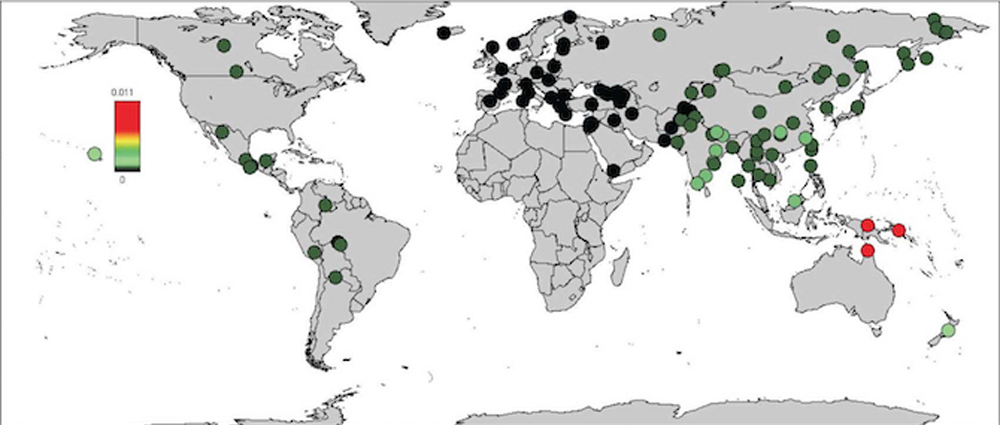Trace Your Ancient Human Ancestry with New Map

A new map allows us to trace our ancient human ancestry, revealing how extensively past interbreeding has affected people alive today.
The genetic analysis behind the map's creation strengthens earlier findings that modern humans migrating out of Africa and interbred with the populations they encountered in Europe and Asia. These populations consisted of at least two types of ancient humans: Neanderthals and Denisovans.
Neanderthals have received a lot of attention over the years, and studies have concluded that all people of European and Asian heritage are related to Neanderthals. Denisovans were identified more recently, yet these mysterious, now-extinct humans that once ranged from Siberia to Southeast Asia turn out to have really made their mark in modern genomes. People of South Asian ancestry today may actually be more Denisovan than they are Neanderthal.
Photos: Faces of Our Ancestors
The new research, published in the journal Current Biology, also determined that modern human interbreeding with Denisovans happened about 100 generations after the trysts with Neanderthals.
"There are certain classes of genes that modern humans inherited from the archaic humans with whom they interbred, which may have helped the modern humans to adapt to the new environments in which they arrived," senior author David Reich, a geneticist at Harvard Medical School and the Broad Institute, said in a press release.
"On the flip side," he added, "there was negative selection to systematically remove ancestry that may have been problematic from modern humans. We can document this removal over the 40,000 years since these admixtures occurred."
Get the world’s most fascinating discoveries delivered straight to your inbox.
Gift List Circa 50,000 B.C.: Photos
Studying what ancestry was removed via natural selection, as well as what was added, is helping researchers determine which traits were favored for modern human survival as people migrated into Asia and Europe from Africa.
For example, Reich and his team said Denisovan genes could potentially be linked to a more subtle sense of smell in Papua New Guineans and high-altitude adaptions in Tibetans. Meanwhile, Neanderthal genes found in people around the world most likely contribute to tougher skin and hair.
The scientists' analysis of Denisovan, Neanderthal and modern human genomes found that ancient human ancestry was lost from the X chromosome, as well as in genes expressed in the male testes. They believe that this has contributed to a reduction of fertility in certain men.
Are You Related to Neanderthals? Photos
The results further show that individuals from Southeast Asia and all of Oceania — which encompasses Australia, New Zealand, Papua New Guinea and more — have the highest percentage of archaic ancestry. Western Eurasians, on the other hand are the people outside of Africa with the least amount of Neanderthal or Denisovan genes.
"The interactions between modern humans and archaic humans are complex and perhaps involved multiple events," Reich said.
Many such questions about Neanderthals, Denisovans and other early humans still remain unanswered.
As lead author Sriram Sankararaman said, "We can't use this data to make claims about what the Denisovans or Neanderthals looked like, what they ate, or what kind of diseases they were susceptible to. We are still very far from understanding that."
Originally published on Discovery News.


